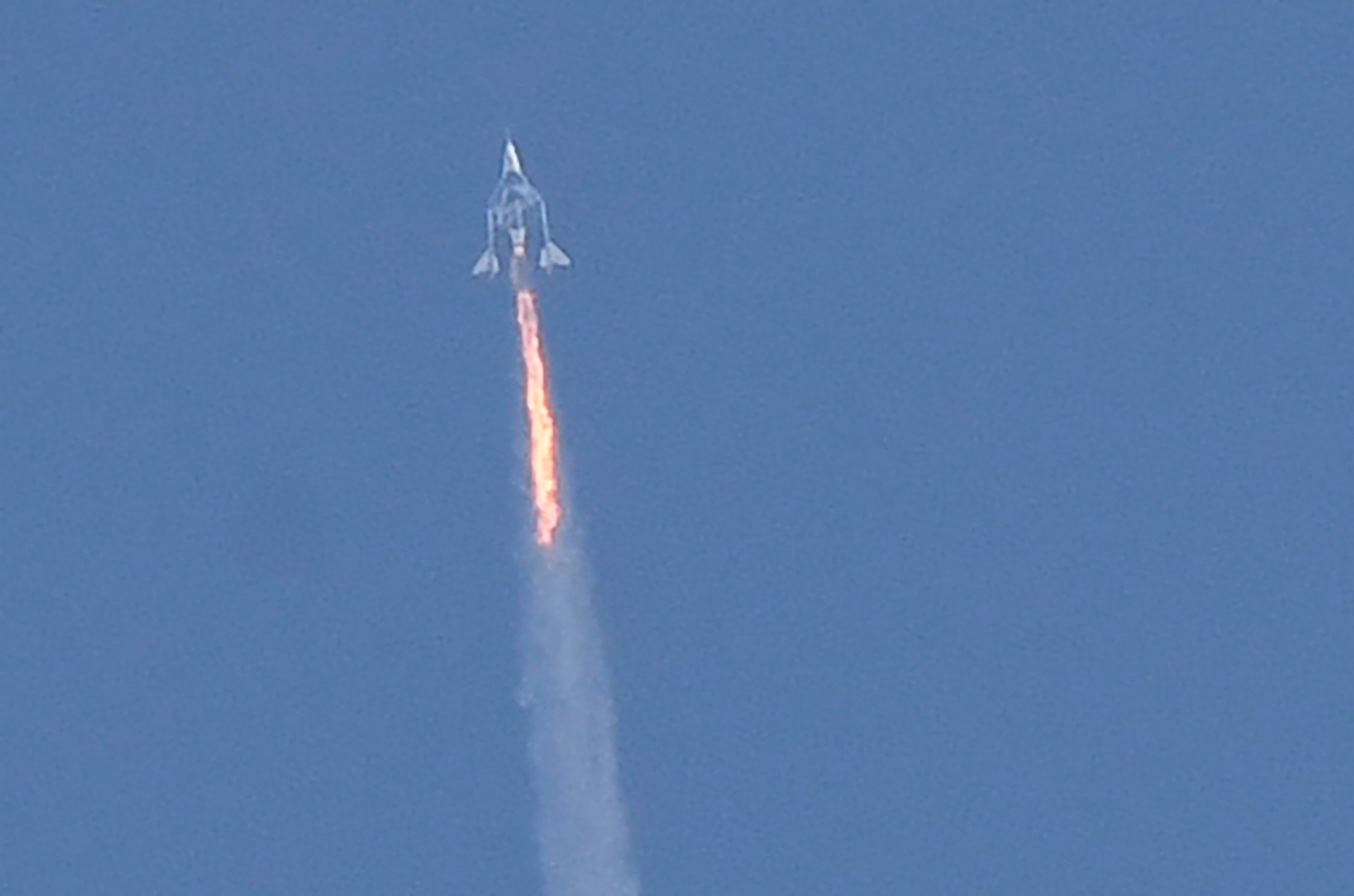Flights to the edge of space are not just ‘joyrides’ for the rich, say scientists
Sub-orbital flights can offer better platforms to conduct short duration experiments, say scientists

Your support helps us to tell the story
From reproductive rights to climate change to Big Tech, The Independent is on the ground when the story is developing. Whether it's investigating the financials of Elon Musk's pro-Trump PAC or producing our latest documentary, 'The A Word', which shines a light on the American women fighting for reproductive rights, we know how important it is to parse out the facts from the messaging.
At such a critical moment in US history, we need reporters on the ground. Your donation allows us to keep sending journalists to speak to both sides of the story.
The Independent is trusted by Americans across the entire political spectrum. And unlike many other quality news outlets, we choose not to lock Americans out of our reporting and analysis with paywalls. We believe quality journalism should be available to everyone, paid for by those who can afford it.
Your support makes all the difference.While the edge-of-space is an arbitrary boundary defined differently by various government bodies and organisations, and is also the current tourist destination for billionaires like Jeff Bezos and Richard Branson, sub-orbital flight may offer an alternative platform for some science experiments conducted at the International Space Station, say scientists.
Virgin Galactic founder Richard Branson flew to an altitude of 86 km on 11 July in his company’s rocket-powered spaceplane, and Blue Origin Jeff Bezos is set to embark on an edge-of-space trip today (20 July) reaching the Karman Line, an arbitrary demarcation of the boundary of space, 100 km above Earth’s sea level.
Meanwhile Nasa Mission Control places the edge of space at 122km above Earth’s mean sea level based on the point from which the agency’s spacecrafts begin experiencing drag upon re-entry, Bhavya Lal and Emily Nightingale of the Science and Technology Policy Institute note in a 2014 review article.
Different definitions exist for the edge-of-space, and while the space crafts designed to travel to these imaginary boundaries above the Earth are different from those meant for space, this sub-orbital region could offer a platform for conducting some short-duration microgravity experiments that are commonly conducted at the ISS.
Some scientists studying microgravity say the two to four minutes of weightlessness offered during suborbital flights can be a middle ground to currently available options for experiencing the phenomenon on the Earth.
According to Steven Collicott, a professor of aeronautics at Purdue University in Indiana, microgravity experiments currently flown out to the International Space Station can be hugely expensive, and needs equipment that can survive harsh G-forces and vibrations during the journey.
While sub-orbital flights offer only few minutes of weightlessness to carry out some short duration experiments, they only cost a fraction of what it takes to fly such equipments to the ISS, Collicott tells Live Science.
Researchers, including Vladimir Pletser, a visiting professor at the European Space Agency (ESA), noted in a 2016 study that studying the effects of microgravity on human subjects are either carried out in aircraft parabolic flights which offer only 20s of weightlessness or aboard the ISS to which sending humans and payloads are more cumbersome.
“Suborbital flights are a new experimental platform, which, by providing a period of one to four minutes depending on the model of spacecraft used, allow to bridge the time interval of microgravity between aircraft parabolic flights (20 s) and orbital flights on the ISS for experiments with human subjects and operators,” Pletser and his team noted in the study.
In one such suborbital experiment, conducted aboard a Blue Origin New Shepherd rocket, scientists including Vijay Duraisamy and Sathya Gangadharan, assessed how the human immune system’s T-Cells behaved under the influence of microgravity.
The results of this study, which are yet-to-be peer-reviewed and posted in May in the platform bioRxiv, noted that the functional capabilities of flown T cells were reduced.
“We found that exposure to microgravity decreased the expression of T cells with CD4+ cells being more sensitive to suborbital flight as compared to CD8+ cells,” the scientists noted in the study, adding that the findings need to be further validated.
According to the Duraisamy and his team, astronauts subject to the space environment experience some symptoms such as fatigue and disruption of sleep cycle that are common to those suffering from diseases on Earth.
They note that studying the effects of microgravity on human cell samples during suborbital flights could help in building better protols for human body adaptation to the hostile environment of space.
Join our commenting forum
Join thought-provoking conversations, follow other Independent readers and see their replies
Comments